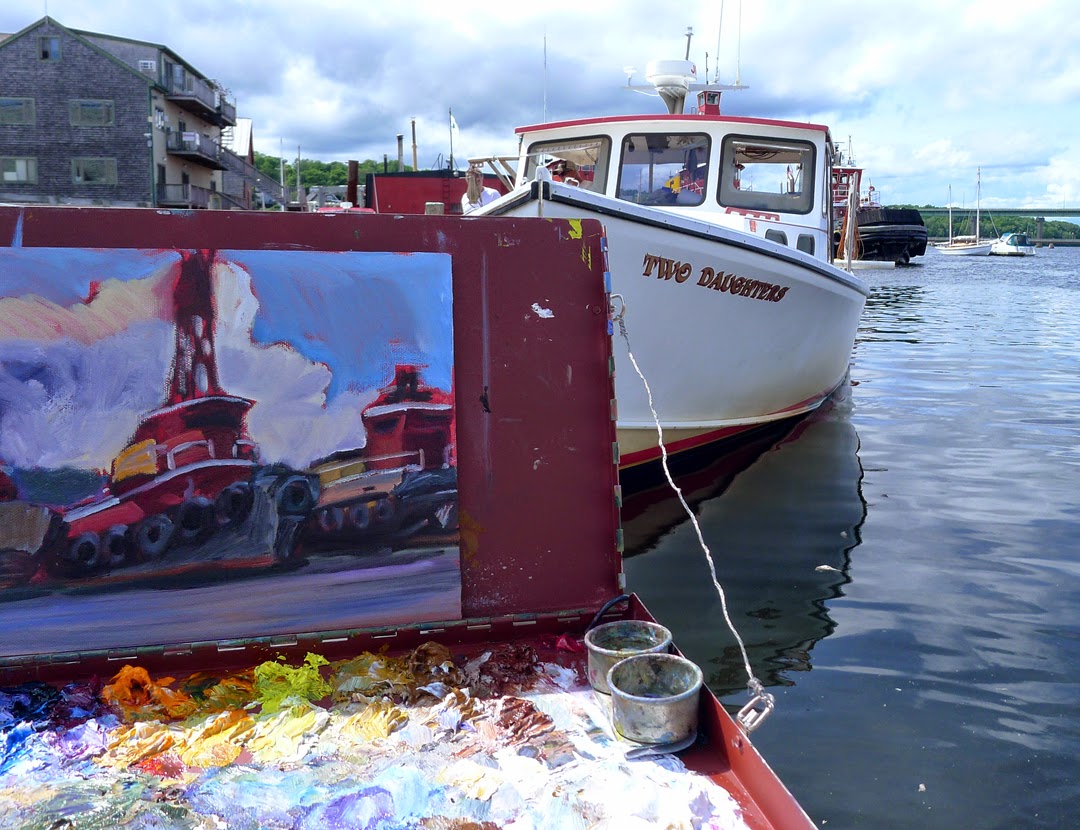 |
| My neighbor clearing a fence at 6 AM, before the bugs came out. |
In Leisure: the Basis of Culture, Josef Pieper posited that leisure is the foundation of culture and that our bourgeois world has stamped out leisure, Pieper wrote this before the construction of the welfare state. If he’d lived to see it, he might have posited a corollary: the West now concentrates leisure in the least-educated classes, and our movies and music reflect that, with their emphasis on violence and misogyny and peculiar fascination with Kim Kardashian.
 |
| That’s a well. And a bucket. You know the drill. |
As an intellectual in the German Empire, Pieper presumably had servants to do his grunt work. Being off the grid makes me wonder who in pre-Industrial society had any time to do anything but work. Of course, I am trying to marry my 21st century work with an 18th century existence, which in some ways means I’m doubling my work load. But having said that, I’m able to take certain shortcuts, such as going to the Laundromat instead of pounding my clothes on a rock.
 |
| The Eco-Warrior can’t come up the lane any farther than this. Her poor suspension is meant for city streets, not off-roading. |
On the other hand, I also live with 21st century expectations, such as wanting clean linen and hair. And there are no longer systems for living without electricity and city water; for example, we no longer have night-soil men, which means my first job in the morning is to bury the waste from my improvised chamber pot.
 |
| Any camper knows the night-soil solution. Best done before one actually wakes up. |
At home, I’m a pretty organized person. Here, I’m watching all my systems fall apart, starting with making my bed. It is obvious that integration of domestic work in a non-industrial setting means that if one job doesn’t get done, everyone suffers. Without refrigeration, if you don’t make dinner, you go hungry. If you don’t wash clothes, you’re filthy. There are no deep pantries or walk-in closets here in the woods. Just mosquitoes. The pejorative terms “slattern” or “layabout” have real meaning in a world where work equals survival.
 |
| There are definitely consolations. Being alone in Paradise is one of them. |
I am not afraid of the dark, nor am I worried about being alone in the woods. I do, however, perceive darkness differently from this vantage point of aloneness. Having not had the foresight to bring a musical instrument, I find myself going to bed early and reading, and then getting up with the birds at about 5 AM.
 |
| No electricity and a ladder to my loft means an 8 o’clock bedtime and getting up before 5. |
Having spent Saturday morning painting re-enactors, I was able to peek behind the curtain of their performance. On Sunday evening, they went home and took hot showers, and went back to their day jobs. I wonder what they would feel about their existence if their encampments lasted an entire summer, and if there weren’t a lovely, clean restroom at the Visitor Center.
Sorry, folks. My workshop in Belfast, ME is sold out. Message me if you want a spot on my waitlist, or information about next year’s programs. Information is available here.

























